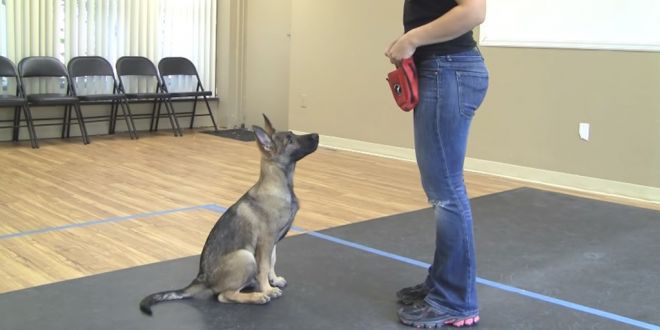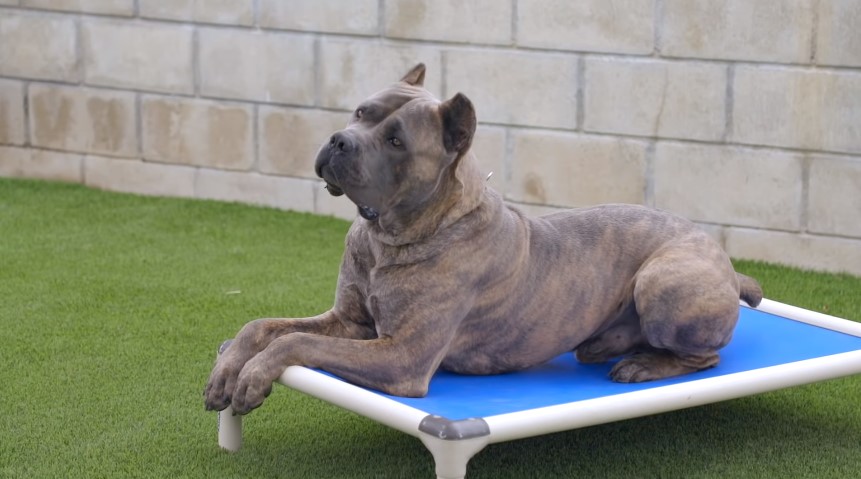Keeping a dog is a joyful and rewarding experience. But for you to fully enjoy your pet’s companionship, it must be well trained. A badly trained dog is a burden on you, your family, and your neighbors. So, when you get a new dog as a puppy or as an adult from a shelter, it is your responsibility to teach it some basic commands.
With several 10-to-15-minute practice sessions each day, your dog will learn the basic commands in a week or two. This will make life easier and enjoyable not only for you but for your furry companion as well. Though they can learn 100’s of commands, you must start with the basic commands first. These commands will lay the foundation for mastering other commands.
7 Basic Commands used to Train a Dog
1. Sit
This is one of the easiest commands for your pet to master. It is also one of the first commands taught to a new dog or puppy. This command also helps your dog learns to respond to training. While training, use humane and positive methods. You can use chewable treats for motivation or rewarding.
2. Lay Down or Down
This command is great for large dogs. Once your dog masters this command, you can take it to the park or the local café without worrying too much. A relaxed dog that lies down on command will be seen as non-threatening to other people and pets. This can get your dog into the good books of other people.
3. Stay
A dog who learns this command won’t go berserk when it sees other dogs or people. It is recommended that you train this command to your dog when it is tired or hungry. It will not focus when it is feeling hyper.
Some dogs learn this command quicker than others. But a week or two of persistent and consistent training will do the trick. This command will your dog from danger and give assurance to other people around it.
4. Come
This command is invaluable if you want to take your dog anywhere unleashed. Dogs get excited during park or beach visits when they see other dogs. This command will help you keep your dog along your side in traffic and prevent scuffles with other dogs.
5. Off
It is always when your dog jumps on you or other people uninvited. This command will keep your dog calm while meeting other people and also keep it off furniture. This command, however, must not be confused with “down” or “lay down”.
You can easily teach this command to your dog by turning back when it jumps on you. You can also grab its paws and make noise with a plastic bottle filled with coins. Many canister vacuum for pet hair reviews recommends this command as a part of a wholesome measure to keep pet hair off furniture.
6. Heel or Controlled Walking
A dog tugging on its leash while you take it out for a jog or a walk is extremely annoying. It becomes, even more, worse if your dog is large. This command will teach your pooch to adjust its speed with yours and will also make it sit when you stop.
7. No
“No” is a versatile command that you can use for or everything you want your pup not to do. The “no” should be sharp and authoritative. With time your dog will learn to associate this command with something it isn’t supposed to do and follow suit.
It is also important to have a single command. Multiple commands for different situations like “leave it” or “don’t touch” will only confuse your dog. Keep the command simple.
Final Thoughts
A well-behaved dog is your pride and the favorite of your friends and neighbors. The above basic commands will lay a foundation to teach your dog other commands like fetch or jump and other tricks. While training, use positive reinforcements like a pat, a rub, or a treat. A “good boy” or a “good doggy” will do wonders.
You can also use its favorite chewable treat as a reward. Your dog has a short attention span. You need to use these positive reinforcements as soon as it has completed a trick successfully. Any delay will mean that it won’t associate the reinforcement with the training.
Patience and persistence are the keys. Don’t push the training too hard. You must also be extremely consistent during training. Teach your dog one trick at a time. Use the command words with a sharp and authoritative tone. Your persistence will reap rich rewards. A properly trained dog will enrich your dog-keeping experience.

 DogExpress
DogExpress






















 in Chandigarh, India.
in Chandigarh, India. 
